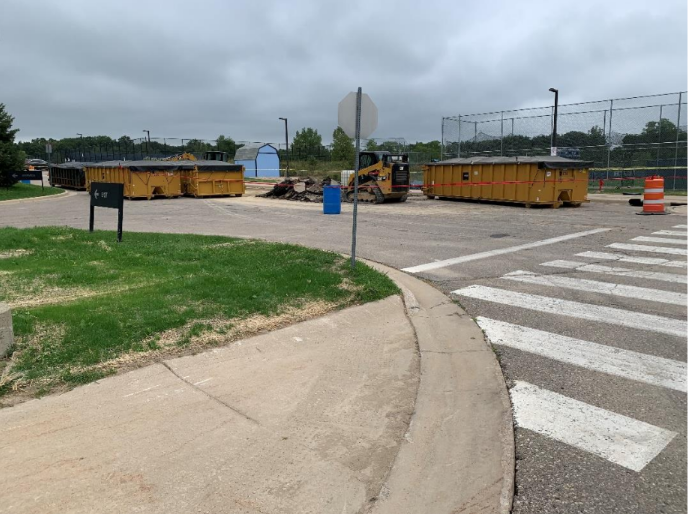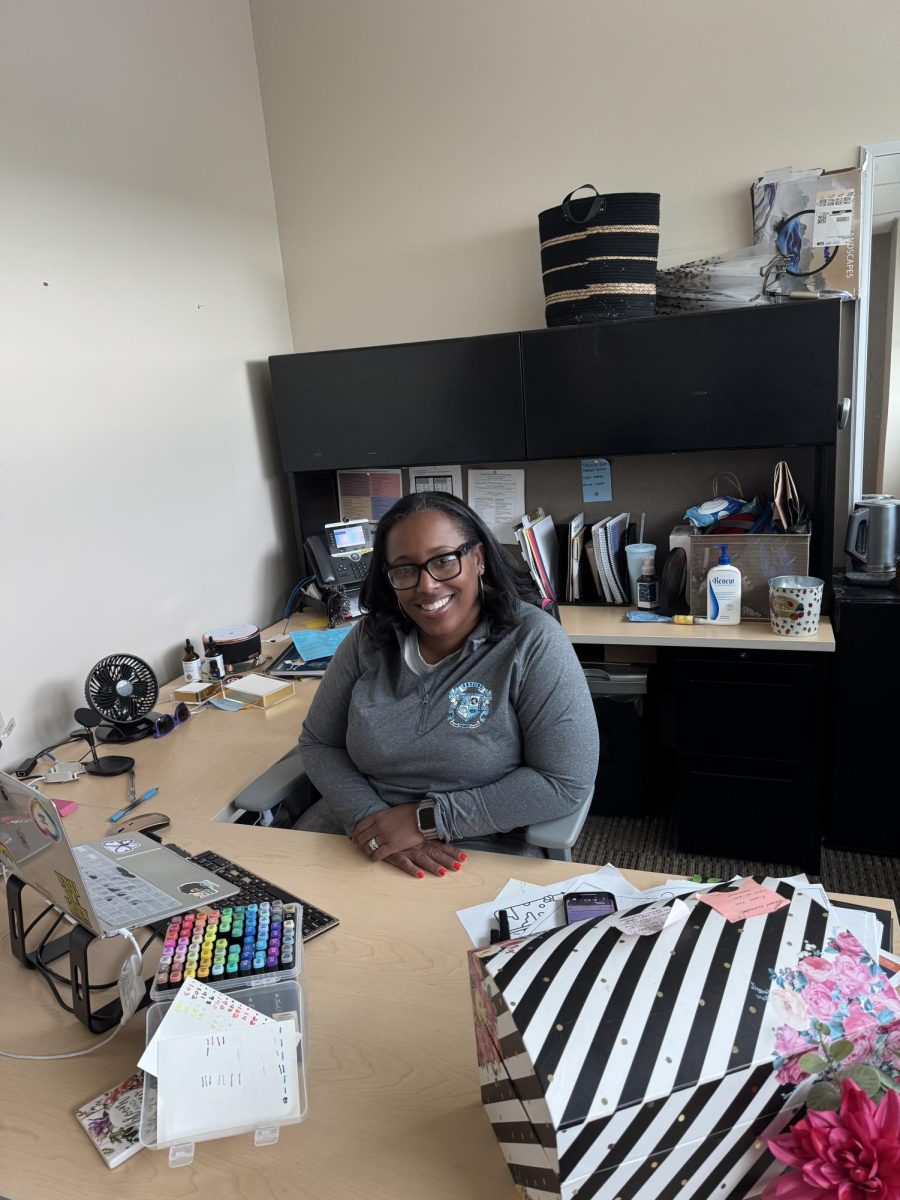On Friday, September 2nd, Samantha (‘23) and Kate Chiang (‘24) brought their cousins, Kean Hui and Jed Hui, with them to play tennis on Skyline High School’s courts in the afternoon. They could never have anticipated what they would stumble upon: green ooze, bubbling from beneath the asphalt into Skyline’s parking lot. Caught on video, it shocked them and the many others who gathered to view the spectacle.
This leak in Skyline’s geothermal system of propylene glycol, a non-toxic, food-grade refrigerant, necessitated a temporary school closure, the installation of a temporary chiller and generator, extensive repair, and vigorous environmental mitigation activities. It was initially reported that ethylene glycol, a toxic refrigerant, was spilled into the Skyline parking lot. While ethylene glycol was once used in the system, Skyline switched to propylene glycol, which is GRAS (generally recognized as safe) by the FDA, years ago.
“A number of years ago the refrigerant used in the geothermal system at Skyline was switched from the more toxic ethylene glycol to the non-toxic propylene glycol,” said Emile Lauzzana, Executive Director of Environmental Sustainability for Ann Arbor Public Schools (AAPS). “The switch was made to remove the toxic liquid from the system as the newer product became available in large quantities at a reasonable price.”
Moving forward, AAPS is working to prevent a leak from occurring again.
On the morning of September 2nd, the AAPS Physical Properties and Capital Programs Department was alerted by their Building Management System (BMS), a remote, cloud-based service, that Skyline’s geothermal system was attempting to add an amount of propylene glycol outside of its normal operating range. In response, a service technician was sent to investigate the situation, who manually shut the system off after consulting with the AAPS Director of Physical Plant, Joshua Mattison. The decision to shut down the closed loop was made possible by school being out of session for Labor Day. This stopped fluid from circulating through the system and allowed for further investigation.
“Our team was looking for a leak Friday morning,” said Jason Bing, Director of Capital Programs for Ann Arbor Public Schools. “We started the process inside the building, confirmed no leaks and moved outside.”
However, it wasn’t until Friday evening that evidence of the leak appeared percolating through the paved road on the east side of Skyline’s campus. This prompted a series of small excavation tests, which revealed the leaking pipe. After patching the pipe temporarily and beginning the permanent repair, Skyline was without cooling. In order for school to resume, a temporary thermal system was installed. The installation of this system precipitated school cancellation the following Tuesday, September, 6th, to ensure Skyline was cooled, secure the work area, and relocate entrances and exits. A temporary cooling supply system, or chiller, was delivered and installed in addition to a generator to power the unit.
“The system was online within 48-72 hours,” Bing added. “A remarkable turnaround by the AAPS facilities team.”
AAPS contractors learned that the pipe was leaking due to a faulty weld at a pipe joint, which was isolated, purged, and later removed. The purging process drains the pipe of any material prior to work being performed and is necessary when conducting any work on pipes containing liquid or gas. New pipe and fittings were installed, inspected, and refilled by a regional geothermal expert, permanently repairing the pipe.
“We were fortunate to have a crew onsite at Forsythe that had the ability, necessary materials, and equipment to make a permanent fix in extremely short order,” Bing said.
Despite the non-toxic nature of the leak, vigorous environmental containment was still undertaken to prevent the propylene glycol discharged from polluting the environment. “Clean up was still required as the substance, though non-toxic, is not naturally occurring nor part of the local ecosystem,” Lauzzana said.
It was also reported initially that the liquid was directed into a storm drain using spill materials. This too is untrue. It was the objective of the environmental service contracted to prevent propylene glycol from entering the storm drain, which would release it into the environment. Spill materials were instead used as a barrier to contain the liquid and as a sponge to absorb it.
Specifically, crews deployed absorbent socks and pads, equipment designed for spills of this nature, to capture and contain the propylene glycol. A vacuum truck removed visible propylene glycol from the parking lot, soil, and storm system. This truck is equipped with a pump to pneumatically siphon liquids into a tank located in the truck, allowing the liquid to be transported to a location where it can be safely processed. Crews also removed soil impacted onto roll-off dump trailers with waterproof covers to be transported to a disposal facility.
To ensure these mitigation measures were effective, extensive testing occurred afterwards. Multiple samples were collected from the discharge point, the location where stormwater leaves Skyline to another system, and the pond downstream. In all samples taken from the discharge point and pond downstream, “propylene glycol was not identified…at any time during the process,” Bing shared.
AAPS also worked with state partners to ensure they remained informed of the status of the leak and its potential environmental impacts. Within 24 hours of the release, according to the Physical Properties and Capital Programs Department, AAPS contacted the AAPS Michigan Department of Environment, Great Lakes and Energy (EGLE) stormwater manager. In addition, AAPS contacted the 24-hour Pollution Emergency Alert System (PEAS) to report a release into the environment. A report was prepared for the EGLE Stormwater Project Manager. AAPS will continue to coordinate with EGLE regarding the closure, or complete mitigation, of the geothermal leak.
AAPS believes this leak to be an isolated incident due to the faulty weld. AAPS is, however, being proactive in working to prevent a future leak and do whatever necessary to better detect and mitigate the impact of future leaks. Bing has already started to identify what can be done. “We have engaged a geothermal expert consulting engineer to review our system and make recommendations moving forward.”







